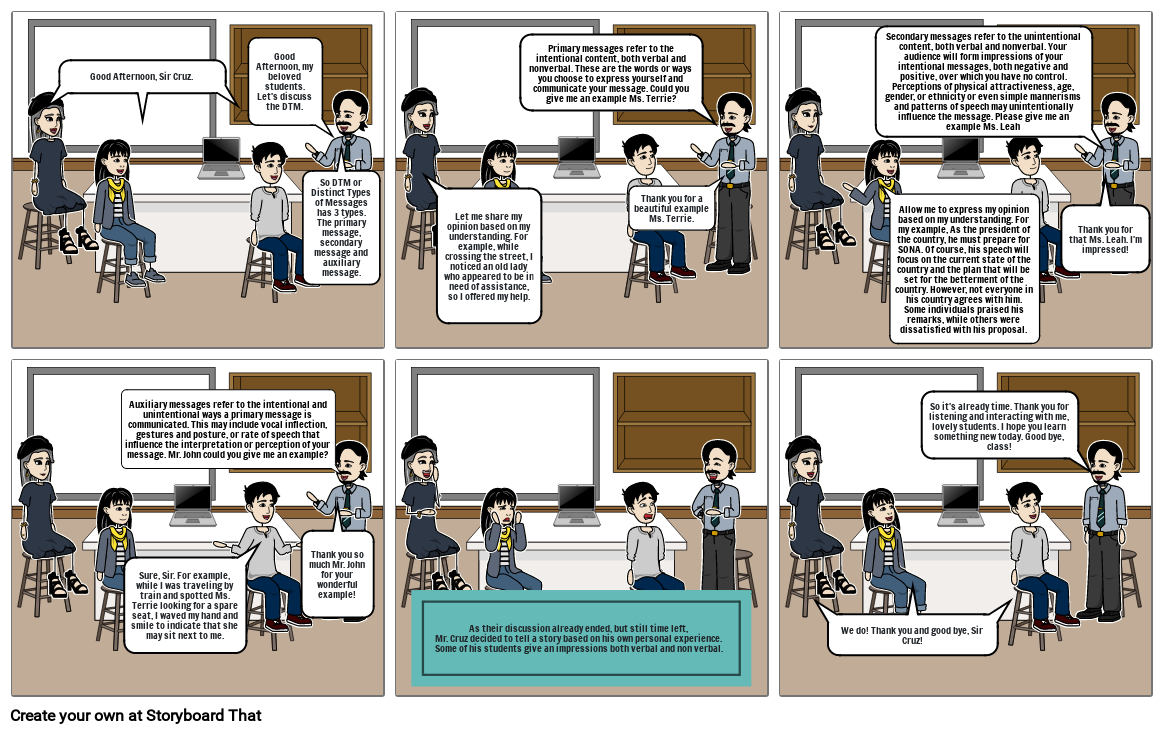Discussing the Distinct Types of Messages

Kuvakäsikirjoitus Teksti
- Good Afternoon, Sir Cruz.
- Good Afternoon, my beloved students. Let's discuss the DTM.
- So DTM or Distinct Types of Messages has 3 types. The primary message, secondary message and auxiliary message.
- Let me share my opinion based on my understanding. For example, while crossing the street, I noticed an old lady who appeared to be in need of assistance, so I offered my help.
- Primary messages refer to the intentional content, both verbal and nonverbal. These are the words or ways you choose to express yourself and communicate your message. Could you give me an example Ms. Terrie?
- Thank you for a beautiful example Ms. Terrie.
- Secondary messages refer to the unintentional content, both verbal and nonverbal. Your audience will form impressions of your intentional messages, both negative and positive, over which you have no control. Perceptions of physical attractiveness, age, gender, or ethnicity or even simple mannerisms and patterns of speech may unintentionally influence the message. Please give me an example Ms. Leah
- Allow me to express my opinion based on my understanding. For my example, As the president of the country, he must prepare for SONA. Of course, his speech will focus on the current state of the country and the plan that will be set for the betterment of the country. However, not everyone in his country agrees with him. Some individuals praised his remarks, while others were dissatisfied with his proposal.
- Thank you for that Ms. Leah. I'm impressed!
- Auxiliary messages refer to the intentional and unintentional ways a primary message is communicated. This may include vocal inflection, gestures and posture, or rate of speech that influence the interpretation or perception of your message. Mr. John could you give me an example?
- Sure, Sir. For example, while I was traveling by train and spotted Ms. Terrie looking for a spare seat, I waved my hand and smile to indicate that she may sit next to me.
- Thank you so much Mr. John for your wonderful example!
- As their discussion already ended, but still time left,Mr. Cruz decided to tell a story based on his own personal experience. Some of his students give an impressions both verbal and non verbal.
- We do! Thank you and good bye, Sir Cruz!
- So it's already time. Thank you for listening and interacting with me, lovely students. I hope you learn something new today. Good bye, class!
Yli 30 miljoonaa kuvakäsikirjoitusta luotu

